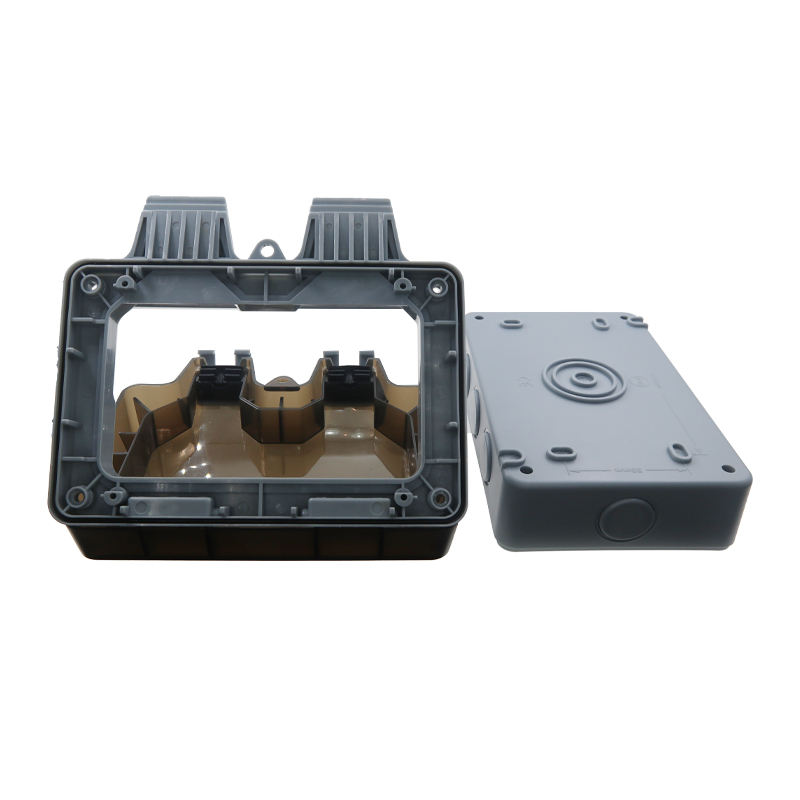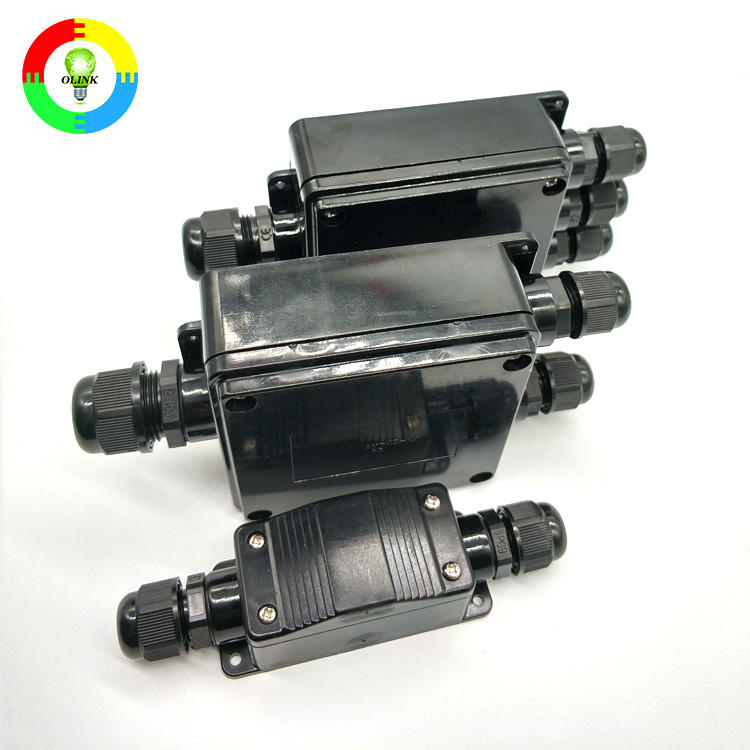A junction box, also known as a splice box or connection box, is a critical enclosed device in electrical systems, used to protect, organize, and connect wires. It distributes power/signals, simplifies maintenance, and ensures safety by preventing short circuits or electric shocks. Available in various types (plastic/metal, weatherproof/explosion-proof) for residential, commercial, industrial, outdoor, and automotive applications.
Click to learn more about Function-Box
What is the Purpose of a Junction Box?
Residential electrical wiring: Connect and distribute power for lighting, sockets, switches, and household appliances in homes, apartments, or villas.
Commercial building installations: Integrate wiring for HVAC systems, security cameras, fire alarms, and office equipment in offices, malls, or hotels.
Industrial equipment integration: Centralize signal and power connections for machinery, production lines, control panels, and industrial sensors in factories or workshops.
Outdoor electrical projects: Protect and connect wires for street lighting, landscape irrigation systems, outdoor monitors, and temporary construction sites.
Automotive/transportation applications: Manage wiring harness connections for vehicle electronics, such as car lights, sensors, and on-board control systems.

What is the Function of a Junction Box?
Protect electrical connections: Shield wire splices, terminals, and connections from physical damage, dust, moisture, and corrosive substances to ensure connection stability.
Distribute electrical power/signals: Split a single power source or signal line into multiple branches to supply power or transmit signals to multiple devices.
Simplify wiring and maintenance: Centralize scattered wire connections for easier installation, inspection, troubleshooting, and future modifications.
Ensure electrical safety: Prevent short circuits, electric shocks, or fire hazards caused by exposed connections, complying with electrical safety standards.
Organize wiring layout: Neatly arrange wires to avoid tangling, reducing the risk of wiring errors and improving overall system reliability.
Where Are Junction Boxes Located?
Key Location Categories
Residential Buildings: Hidden in walls, ceilings, or floors (behind drywall, above ceiling tiles, or under floorboards) near light fixtures, switches, or sockets. Also found in basements, attics, or crawl spaces for main circuit branches.
Commercial/Industrial Spaces: Mounted on walls, pillars, or equipment frames (often surface-mounted for easy maintenance) in offices, factories, or warehouses. For recessed applications, located in ceiling cavities or mechanical rooms.
Outdoor Settings: Installed underground (in trenches), on utility poles, or near outdoor devices (e.g., street lights, security cameras). Outdoor-specific models (e.g., weatherproof, stormwater junction boxes) are placed in drainage areas or near exterior wiring connections.
Specialized Scenarios: In vehicles (under dashboards or in engine bays) for wiring harness connections; in construction sites (temporary mounting on scaffolding) for temporary circuits; in marine/aerospace systems (secured in sealed compartments) for corrosion-resistant wiring hubs.
Key Location Principles
Near wire splices or connections (to minimize wire length and simplify maintenance).
In dry, protected areas (unless using waterproof/weatherproof models).
Accessible for inspection, troubleshooting, or modifications (avoiding permanent concealment without access panels).
How Do I Know If I Need a Junction Box?
You need to splice or connect multiple wires.
You have electrical connections exposed to the environment that require protection.
You need centralized organization for wiring.
You’re installing/modifying circuits for additional devices.
Local electrical codes mandate enclosed connections.
Wires cannot be directly connected and hidden without proper enclosure.
The connection point is in a high-risk area.
You need to split power/signals between multiple devices.
The connection may require future inspection or modifications.

Electrical Junction Box Rules
Installation Compliance
Follow local electrical codes (e.g., NEC, IEC, CEC) for mounting height, spacing, and location restrictions.
Avoid installing in hidden, inaccessible areas (e.g., behind permanent walls without access panels) unless specified by code.
Ensure secure mounting to structural elements (joists, studs, or equipment frames) to prevent vibration or displacement.
Wiring & Capacity Requirements
Do not exceed the box’s wire fill capacity (calculated by wire gauge, number of conductors, and fittings).
Use approved splicing methods (e.g., wire nuts, crimp connectors, terminal blocks) and ensure tight, corrosion-free connections.
Ground all metal boxes and bonding conductors in accordance with safety standards to prevent electric shock.
Protection Level Matching
Select boxes with a protection rating (IP code) suitable for the environment (e.g., IP54+ for outdoor/wet areas, IP20+ for dry indoor spaces).
Use explosion-proof or corrosion-resistant boxes in hazardous environments (flammable, corrosive, or dusty settings) as required by code.
Ensure weatherproof boxes have sealed covers and gaskets to prevent moisture or dust ingress.
Material & Construction Standards
Use code-approved materials (e.g., UL-listed plastic, corrosion-resistant metal, fire-retardant composites).
Metal boxes must be grounded and compatible with the wiring system (e.g., avoiding galvanic corrosion between dissimilar metals).
Ensure boxes have sufficient structural strength to withstand installation, operation, and maintenance forces.
Accessibility & Maintenance Rules
Boxes must be accessible for inspection, troubleshooting, and modifications throughout the system’s lifespan.
Label boxes clearly (e.g., circuit number, application purpose) for easy identification during maintenance.
Do not block or cover junction boxes with building materials, furniture, or equipment.

Electrical Junction Box Types
Types by Installation Method:
Surface-mounted junction box
Flush-mounted (Recessed) Junction Box
Underground junction box
Types by Protection Level:
General-purpose junction box
Weatherproof junction box
Explosion-proof junction box
Corrosion-resistant junction box
Types by Application Scenario:
Lighting junction box
Automotive junction box
Stormwater junction box
Industrial junction box
Types by Material:
Plastic junction box
Metal junction box
Concrete junction box

FAQ:
Q:What is the difference between a junction box and a distribution box?
A:A junction box focuses on wire connection/organization, while a distribution box emphasizes power distribution/protection.
Q:What is the difference between a junction box and a switch box?
A:A junction box focuses on wire connection/organization, while a switch box is designed to house and mount electrical switches with built-in wiring access.
Q:What is a junction box for lighting?
A:A lighting junction box is a specialized electrical enclosure designed specifically for connecting, splicing, and protecting wires in lighting systems.
Q:What is a junction box for recessed lighting?
A:A junction box for recessed lighting (also called a "recessed lighting junction box" or "can light junction box") is a specialized electrical enclosure designed exclusively for wiring and protecting connections in recessed (in-ceiling/in-wall) lighting systems.
Q:What is a stormwater junction box?
A:A stormwater junction box (also referred to as a stormwater connection box or drainage junction box) is a specialized underground enclosure designed to manage, connect, and redirect stormwater drainage pipes in residential, commercial, or municipal stormwater systems.
Q:What is a junction box in a car?
A:A junction box in a car (also called an automotive junction box, vehicle wiring junction box, or sometimes a fuse box—though not identical) is a specialized electrical enclosure that organizes, connects, and protects the vehicle’s wiring harnesses and electrical connections.